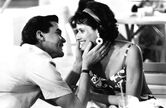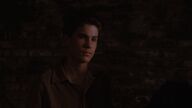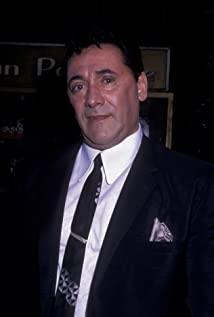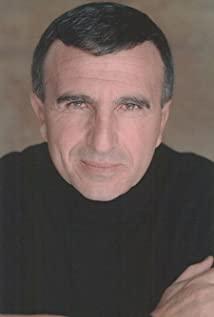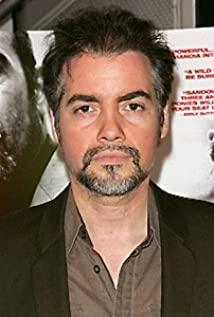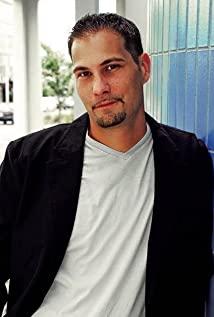"The Way of Pirates", which spans decades, is just like what Martin Scorsese mentioned in an interview. With Henry's experience and the change of his mentality, it corresponds to the changes of the times. The 1950s was a period of continued recovery in the United States after the war. Little Henry's expectations for the life of the gang (like the "American Dream" reappearing), and the enthusiasm he exudes after joining the gang (from a show that he smashed other people's cars) The coherent shot of the glass can be reflected) and his rising process is actually somewhat similar to the social situation at the time; and the "vital and vigorous" of the 1960s (many people think that the 1960s was the best decade of the 20th century), Henry The film was followed by a long shot of him taking Karen skilfully through the nightclub with a portable camcorder, which fully demonstrated Henry’s weight in the gang and his style of spending money like water, just like the director himself had Said: "He looks so young, and his life is so full of hope, as if the whole world exists for him, the whole world is waiting for him to conquer, and the United States at that time, why not like this? ?"
But in the 1970s, with the end of the Vietnam War and the wounds left by the war, there was a wave of anti-war and suspicion and dissatisfaction with the government throughout the United States (Henry in the film also changed his view of "theft is right") , American consumer culture after the war also began to degenerate. And the scene where Billy Batts was killed became a "watershed". It not only paved the way for Tommy to be "punished" in the future. Will suffer revenge from the Mafia), and pave the way for the changes in the fate of the other two male protagonists (it was from this time that Henry and his gang went further and further, leading to his third arrest. Decided to betray friends and confess to accomplices). Another "turning point" of the movie "Pirates" is described in a larger length. On that "very busy" day, Martin Scorsese relied on faster shots and editing to express the 80s Fast-paced, and the situation is like the cultural degeneration after MTV invaded the masses. In this era, many people have been woven into the pop culture situation by Luo. The opium-like illusion spontaneously arises. Henry, who takes a lot of drugs and drugs, drove a car and drove through the labyrinth-like streets, which reflected his own inner dizziness. , Or the state of collective loss under the surface of "high spirits" in the 1980s.
Martin Scorsese’s "There is a Way to Pirates" is adapted from Pileggi’s "Wiseguy: Life in a Mafia Family". The "memoir style" that this non-fictional work reads directly affects the director's approach to the film. Handling techniques. The addition of the protagonist’s narration makes "Pirates Also Known" more documentary-like features, and also enhances the "subjectiveness" of the film ("Sisters" and "Gambling" of "Pirates Also Known" "Story of the City" is to bring this documentary style to the extreme), and the one that just started the movie, looking at the street outside the window through the eyes of little Henry, has first emphasized to the audience that this subjective angle will be It appears frequently in this film.
However, there is one area worth discussing. In addition to Henry’s narration, Karen’s narration also appears in "The Thieves". This actually implies that the relationship between the two people, in addition to being a partner, may also be like Two sides of a mirror. Karen, who is from a good background, didn't have a good impression of Henry at first, especially when the two of them had a date, Henry unexpectedly missed the appointment. But one day, when Henry took Karen to a nightclub, they didn't enter through the formal main entrance, but walked through the side entrance that ordinary people can't enter. From then on, the lens has not been disconnected, and Henry’s chic and unfavorable manner made Karen amazed; at this moment Karen was overwhelmed by Henry, and Henry was caught in the underworld at the beginning of the movie. The situation completely overwhelmed by the charm of the two of them is similar. The love and marriage of the two of them are just like Henry's relationship with the gang at the time. They are in a honeymoon period.
But the sweetness of the newly-married didn’t last long, Henry couldn’t bear it, and had an extramarital affair with the slutty Janice, which caused an angry Karen to scream at the door of Janice’s apartment and point her gun "abnormally". Henry threatened him to break up with his mistress immediately. Henry’s messy extramarital affairs and Tommy’s unreasonable provocation in the bar show that a well-run order in the past is being broken; and Karen raises a gun at her husband, and is in the back of the car with Billy Batts. The scene of being killed in the box corresponds to each other. At this moment, Karen has lost faith in her husband, just as Henry suspected that "theft is a good way." , But still relied on Henry and couldn't go away. This dependence is very consistent with the relationship between Henry and the gang. Just like Henry's remorseful confession before the end of the movie, the hardest thing in his life is to leave the gang life he is used to.
Since Henry's second arrest and release from prison, his relationship with Karen has undergone new changes. During this period, although Henry still had an affair, Karen adopted an unregulated way to deal with their marriage. Karen’s "indifferent" attitude is just like Henry's attitude towards his gang at this time. After Henry chooses to sell his friends, he seems to have no spiritual conflict and torture. He decided to cooperate with the FBI only to care about the treatment of life. Require the Witness Protection Program to arrange oneself to live in a warm climate and so on. And the reason Karen can't live without this man, in essence, is that she can't live without Henry's life, which is like the two people's addiction to and dependence on drugs or drugs, it seems that they are getting deeper and deeper. To be rescued, they must obtain it in pain. This is reminiscent of the Dustoevsky-style "atonement" equation in "Mad Cow" where the sacrifice of physical well-being in exchange for peace of mind. When the drugs hidden in the house were poured into the toilet by Karen, and the two of them lost their most important "household", Henry and Karen's crying with each other was the beginning of their "atonement"; and this fall also marked the beginning of their "atonement". The two walked out of the abyss of "dependence", prompting Henry to break away from the gang or the comfortable life of the gang, and also prompting the marriage, which had long since seemed to be divorced, to end.
It emphasizes subjectivity, but it maintains the authenticity of recording life. When the film introduces some important characters, it does not deliberately use close-up techniques (except for Jimmy’s first appearance, because he was Henry's attention), just through a long lens in the bar, such as looking around with natural eyes, to give the audience a rough and vague impression. In the process of flat and straightforward narrative, the film suddenly inserted a framed picture of Trufu style, which broke the objective record and gave the film a subjective determination or subjective color. The director once said: "When the image is still, the meaning comes out." Therefore, when Henry watched the freeze frame of the scene after Billy Batts was killed, he told us that this shocking scene had an impact on Henry. , How far-reaching is.
And the original tragic "The Way of Pirates" was dealt with by Martin Scorsese, like the opening scene that laid the death line for Tommy, when its ins and outs were explained in the middle of the movie. When it came out, the director used a black comedy-like "borrowing shovel" episode to temper the tension of the killing of Billy Batts. And after the success of the "Lufthansa Robbery", Jimmy began to eliminate his accomplices in the robbery one by one. At this time Martin Scorsese also borrowed the paragraph from the rock lyrical "Layla" that suddenly became "gentle". Perform a soundtrack for the scenes of the corpses of a robbery participant. The movie "The Way of Pirates" makes killings as common as eating; fear and tension sometimes coexist with playful scenes. It presents the horror and mediocrity of the gang in front of the audience at the same time, just like Zu Perth. The role of Tommy is both grumpy and dangerous, but when you turn your head, he will tell you some funny and vulgar jokes.
Therefore, as Roger Ebert believes, "The Way of Pirates" is not a "Godfather" style movie that deifies gangster characters. Even Tommy, who is prone to impulsiveness and out of control, lacks some basic human rationality. Tommy, who often overreacts, became very angry because a young waiter forgot to pour himself a drink. A few days later, because of the "rude response" from the waiter, he shot and killed him in anger. he. Martin Scorsese deliberately pulled these underworld figures off the "Altar", he changed the singular "Wise Guy" into the plural "Wise Guys" (later because another movie preemptively used "Wise Guys" as the title , Martin Scorsese renamed this work "Goodfellas"), it is to rise from the description of the individual to the observation of the entire gang; and Henry in the film, the doubt that "theft is also the way" arises Zhengzheng also raised the question for us whether these underworld figures have lost their humanity.
As for Henry, the first protagonist who was portrayed more calmly, he was actually a selfish bastard. The rare moment when he carries the good side of humanity in the movie is the scene where he and Karen held a wedding in accordance with Jewish etiquette for love (this wedding is reminiscent of the opening of "The Godfather"). However, after marriage, he and his wife fell together and became slaves to a materialistic life. Karen even got a stack of cash from her husband for going shopping, unexpectedly squatted down to give her husband oral sex as a "thank you"! The movie "The Way of Pirates" made the souls of these protagonists seem to have been hollowed out. Even Henry and Karen's "atonement" process of crying and crying, only freed them from a mutual or dependence on money and status. It is not that basic humanity is redeemed. The director may use Henry's subjective vision or angle throughout the film to narrow the distance between the audience and these characters. In the final analysis, we, who have different human weaknesses, may not be far away from this group of people.
Martin Scorsese’s return to the gang world is a continuation of the theme of "Want to be a saint, but this road is nowhere" in "Poor Streets" in 1973, but Henry of "There is a Way to Pirates", Obviously, it is completely different from Charlie, who tried to compensate for his sins in "Poor Streets", because the protagonist of "Poor Streets" is not a good person, but at least he can still fight for a long time with a certain sense of guilt. , They are still a "person" in the final analysis! Let’s look at the characters in "The Way of Pirates" again. They abandon their principles and betray their friends. In a sense, they can’t even be called "human beings", they are just what they do to themselves, including the acquisition of material life. , And acts of murder and betrayal are completely taken for granted as "wild beasts."
Therefore, Martin Scorsese's "The Thieves" (and later "The Wind and Cloud") is more like an elegy to the already degraded gangsters. They once had a glorious moment, they are approaching sunset and they bid farewell to the original The benevolence and righteousness that I believe in has also bid farewell to the time when I would still live in an immoral world and want to live a moral life. The arrogant gangsters of the past, or the epitome of the country they lived in, have shattered the underworld mythology that little Henry yearns for, and the days when the "American Dream" was passionately erupted are gone forever.
View more about Goodfellas reviews



